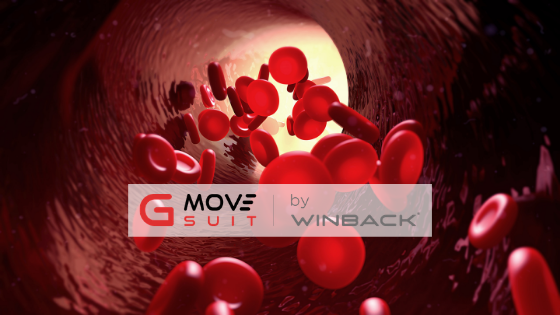Optimising muscle recovery is nowadays one of the main objectives in the search for performance or well-being. For a top athlete, an amateur or a person in the street, everyone wants to enjoy a feeling of light and not tired legs. In order to achieve this state, it is necessary to understand the mechanisms involved and the solutions that can be put in place to achieve it.
Cases of venous insufficiency
This insufficiency is due to a loss of elasticity and tone of the veins, as well as a disturbance of the valves located on the vein wall. They are an integral part of the waste evacuation pathway by the venous return. They are like little valves that prevent reflux and help the blood flow back to the heart.
These valves can be affected by smoking, excess weight, sedentary lifestyle or heredity. This dysfunction leads to an accumulation of blood in the veins of the lower limbs. This blood needs to be pumped back to the heart in order to eliminate the waste products it contains, to be renewed and oxygenated.
This venous insufficiency leads to oedema, pain, the feeling of heavy legs or pulmonary embolism. In some cases, a clot formed can detach from the venous wall, rise towards the heart and cause the obstruction of an artery as well as a pulmonary embolism.
Solutions:
To remedy these problems, drink water and walk. The sural triceps promote venous return. Pressure therapy and massage are also solutions which, thanks to muscular compression, help the valves to open and improve venous return. Depending on the degree, surgery may also be required.
Cases related to lactic acid
Lactic acid is a metabolic waste product created by the muscle as a result of the body’s energy production. It is produced throughout the effort, and more importantly during the increase in intensity. This is due to the reduced supply of oxygen to the muscle and the use of glucose, creating lactic acid which will accumulate in the cells and enter the bloodstream.
Lactic acid lowers the pH of the muscle which disrupts the cellular work of the muscles during contractions which is directly involved in cramps and why certain pains appear during exercise.
Solutions:
The accumulation of lactic acid must be removed so that the muscles can regenerate and therefore recover. This is naturally evacuated by the venous return and by the contraction of the sural triceps, contributing to the functioning of the venous return.
There are several ways to recover muscles and remove lactic acid:
– Active recovery, by performing a low intensity effort in order to accelerate the process of evacuation of the venous return. This is the evacuation of lactic acid by the cardiac pump, often used by high level athletes to accelerate recovery.
– Passive recovery is also a possibility with electrostimulation or pressotherapy as optimisation technology. The massage of muscle tissue by compression accelerates venous return to evacuate muscle waste.
– GMOVE-SUIT, use it in active mode to improve recovery by adding the benefits of compression. There is a stimulation of the sural tricep by carrying out an effort with low intensity, as well as the massage by compression which will optimise removal of the lactic acid.
Conclusion:
For problems of venous insufficiency or lactic acid, the GMOVE-SUIT is a technology that can accompany the user. Active compression can be useful to reduce oedemas at home or in the office, with the physiotherapist, following a traumatology creating a dysfunction of venous return.
GMOVE-SUIT is used in active recovery, thanks to active compression, to remove lactic acid following intense efforts. This will allow for an efficient and improved muscular recovery.

